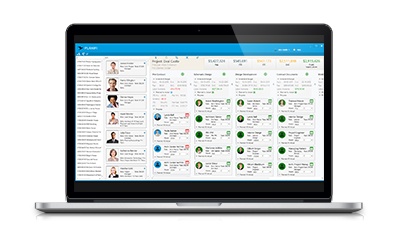“Planning is bringing the future into the present so that you can do something about it now.”
Alan Lakein, writer
In our last blog post, “Delivering Projects and Supporting Projects Are Two Sides of the Same Coin,” we discussed the importance of getting everyone in the firm to use the same data. When this happens, project managers get the resources they need to run effective projects and have satisfied clients, and leadership has the information they need to make smarter strategic decisions and increase profits.
In this blog post, we want to introduce the idea of a “Culture of Planning.” Now, before a firm can begin to adopt a “Culture of Planning” they first need to have a clear understanding of the relationship between project managers and leadership (hence the first article).
A “Culture of Planning” means that planning is part of the foundation in your company culture. From the project level all the way up to the business strategy level, planning is an integral part of everything the firm does.

We always have drawings before starting construction, right? How can we expect to run a successful business if we haven’t drafted up the plans to be successful? The simple answer is that we can’t. We need planning to be successful.
Of course, if you ask any firm, they will say, “Of course we have a plan.” Press a little harder and you might hear, “Well, at one point we had a plan, but it might not have been kept up to date. But, we’ve got it in our heads.” You get the idea, plans quickly become an afterthought. The key to success is planning as part of the culture of the firm.

Now, for those firms that are looking to move forward and embrace planning, what is the first step? Sounds kind of daunting, doesn’t it? Well, don’t worry, we’ve laid out the framework for you.
It starts with three simple steps – Plan, then Manage, then Forecast.
Historically, firms have combined Plan and Manage into a single process. They either try to use one tool to manage both processes, or worse yet, try to Forecast without taking one, or both, of these previous steps first. This can lead to all sorts of problems.
The key to success is to Plan first. Start out simple, and make sure it has some flexibility in it. You can establish a few simple requirements for your baseline of services. You should check out our estimating tool for some ideas to get started.

The next important step is to Manage. Don’t forget you need to Plan to Manage. You should review the results and make iterations to your initial plan. Add details to the Plan as they become necessary. For example, you may not start with specific staff members for each project, instead you might use roles. Then, once you get closer to a project kick-off you can start incorporating that project into weekly or bi-weekly staffing meetings.
Last, but not least, is Forecast. This is the end goal, it is what all the hard work in Plan and Manage delivers to the leadership team. But, while Forecast is the target, it is also the beginning of providing the feedback stream back to Plan and Manage.
Getting your firm to adopt a “Culture of Planning” might be challenging, but we can show you the way and provide the solutions so that you are successful with Plan. Manage. Forecast.

